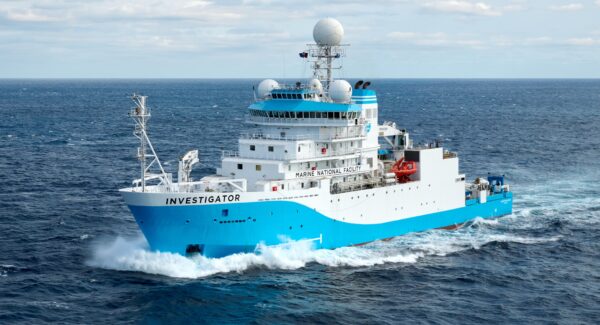Scientists onboard the CSIRO research vessel (RV) Investigator are on a three-week mission to learn more about the increasing influence of human activity on the global atmosphere.
Situated in remote northwest Tasmania, Kennaook/Cape Grim is home to a baseline air pollution station which has been monitoring the makeup of air for nearly 50 years.
The CSIRO says the site is renowned for its exceptionally clean air coming off the Southern Ocean, called ‘baseline’ air as it has had no recent contact with land.
This makes it ideal for measuring the chemical composition of the atmosphere, including changes in greenhouse gas concentrations, the CSIRO says.
For the first time, scientists will compare air quality from the station with those measured up to 1500 km off the coast on the Southern Ocean.
MISSION GOAL
Dr Ruhi Humphries, the lead CSIRO scientist, says the mission goal is to better understand how human activity affects the global atmosphere with a focus on the Southern Ocean.
“The Southern Ocean absorbs a lot of the world’s carbon dioxide and heat so any changes can influence our weather and climate,” he says.
“Since the Kennaook/Cape Grim Baseline Air Pollution Station began taking measurements in 1976, carbon dioxide levels increased by more than 20 per cent, which has implications for future climate change.”
He says their research will measure atmospheric changes across the Southern Ocean, focusing on extreme events, like bushfire smoke, and climate components, including changes in trace gases, aerosols and clouds.
“This voyage will increase our understanding of how clouds form and behave in the Southern Hemisphere and how much heat is getting to the Earth’s surface, and trapped in the climate system,” he says.
“This will help improve regional and global climate modelling, air quality modelling, smoke forecasting and Earth System models.”

CLIMATE MONITORING
Associate Professor Robyn Schofield from University of Melbourne says their research will help improve climate monitoring for Australia.
“To collect data from land and at sea, we will be using state-of-the art technology, including a full suite of atmospheric measurements and sampling systems, to improve and validate data quality from the station and the Investigator,” she says.
“Many climate models are biased on Northern Hemisphere conditions; however, our research will improve gaps in climate science for the Southern Hemisphere.”
The station and the Investigator both serve as monitoring stations as part of the World Meteorological Organisation’s Global Atmosphere Watch, a network dedicated to understanding the increasing influence of human activity on the atmosphere.
Will Ponsonby from the CSIRO Marine National Facility says the systems onboard the Investigator are designed for highly accurate monitoring of the atmosphere onboard a mobile platform.
The Investigator left Hobart on Tuesday, April 29, and will return on May 18.






